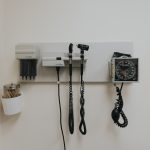Share
Ensuring the purity of the patient record
Two members share their lessons learned
A patient record is our understanding of the patient’s past health and a roadmap to their future care. Making timely, accurate and complete entries is of utmost importance. So too is knowing when and how to make professional amendments.
Recently, I worked with two members whose amendments to patient records went amiss. They are sharing their stories to help others from making similar missteps.
If you ever find yourself managing a complaint, remember these stories. A proper record will facilitate the complaints process and demonstrate good patient care; poorly edited records may result in a new complaint.
Dr. Mike Caffaro
CPSA Complaints Director
Good record keeping
at-a-glance:
- Document all patient encounters.
- Be accurate, complete and timely.
- Make entries legible.
- Only make necessary corrections as per the Health Information Act (HIA) and the Patient Record Content standard of practice.
- Initial and date or track all amendments.
- Append additional information as per the HIA.
*CMPA provides more information on this subject. See ‘Resources‘ in the right-side column on the Patient Record Content standards page.
Making proper amendments to an EMR
Colleagues, I would like to bring to your attention an error I made in record keeping so you can benefit from what I have learned about making proper amendments to electronic patient records.
Last year, I received a complaint to the College. I panicked, and I opened the patient’s chart to read my notes so I could provide the College with information about the case. When I opened the chart, it resulted in an entry in the audit log and updated the entry’s date. Later, this action would be interpreted by the College as an attempt to change the records after the fact.
There is no question; my action did not comply with the standard of practice on record keeping. The error was made worse when I submitted my response to the College, but did not advise them that I had accessed the charts in order to make changes. I did not specifically date any changes and I had not made clear what I changed.
I have since reviewed the standard of practice on Patient Record Content, taken a medical record keeping course at the University of Toronto and completed three CMPA e-Learning modules on documentation. On reflection, I should not have opened the charts, particularly where there was a complaint to the College. Charting is intended to be a real-time record of patient care and if it is not, it should clearly indicate when a change is made. My changes should have been initialed and dated to show what was changed and when the change was made. I should have also noted my rationale for making the change.
Since taking these courses and reviewing the standard of practice, it seems so easy and I could have avoided this concern. As the Patient Record Content standard of practice states:
- A regulated member may amend or correct a patient record in accordance with the Health Information Act (HIA) through an initialed and dated addendum or tracked change including the following circumstances:
a. the correction or amendment is routine in nature, such as a change in name or contact information;
b. to ensure the accuracy of the information documented; or
c. at the request of a patient identifying incomplete or inaccurate information.
This has been an informative experience for me, and I hope you can learn from it as well.
Dr. A
Family Physician
Charting: be thorough the first time
A 48-year-old female patient came to see me with concerns about a lump in the anal area. She was new to my practice. On examination, I observed a fissure and what appeared to be an external hemorrhoid. Digital rectal examination was not possible with the fissure at that time. The patient described recent constipation, but no bleeding or other concerning symptoms.
Over the next three weeks, the patient returned to get a subsequent Pap smear and to discuss her mammogram results. Six months later, she attended emergency with severe rectal bleeding and was diagnosed with stage 4 rectal cancer.
I was not aware of the cancer diagnosis until I received a letter of complaint from the CPSA. I had never had a CPSA complaint-I was terrified. When I logged into my EMR from home to review the visit notes for this patient, I realized that pertinent information was missing from the record. Without thinking, I added the information, but failed to properly identify the addition as a late entry. I quickly realized my mistake.
Now I was in a real panic. I tried over the weekend to get my EMR provider to restore the chart to its original state. Eventually, this was done and I explained it all to the CPSA. Rightly, the Complaints Director was unhappy with what I had done and I have taken charting courses to ensure I am charting to the very best standard, and have the tools to react more appropriately to this type of stressful situation. It has been a painful and humbling experience, but in the end, I hope, my practice and my patients will be better for it.
Dr. B
Family Physician























Comments for this post are now closed. If you would like to share your feedback on this topic, please email support@cpsa.ca.